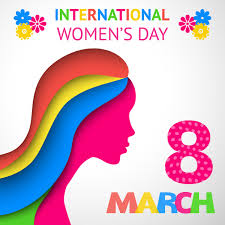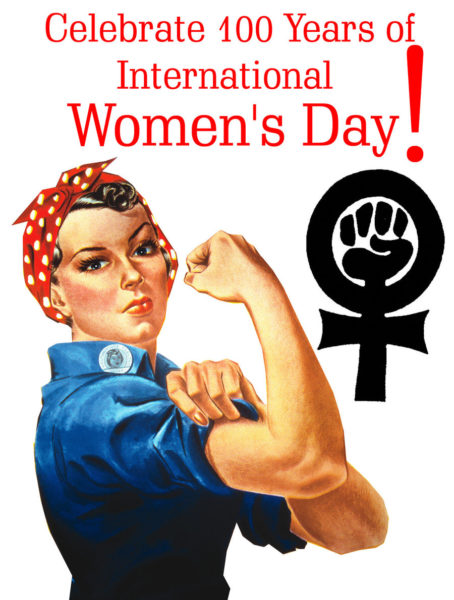
08 Mar International Women’s Day 2017
“No country can ever truly flourish if it stifles the potential of its women and deprives itself of the contributions of half of its citizens,” former First Lady Michelle Obama.
“I love to see a young girl go out and grab the world by the lapels. Life’s a bitch. You’ve got to go out and kick ass,” Maya Angelou.
And today is a great day to follow Maya’s injunction and kick some ass.
Because today is International Women’s Day.
International Women’s Day a global event celebrating the social, economic, cultural, and political achievements of women. The day also marks a call-to-action for accelerating gender parity.

The following is a history from IWD website.
International Women’s Day (IWD) has been observed since in the early 1900’s, a time of great expansion and turbulence in the industrialized world that saw booming population growth and the rise of radical ideologies. International Women’s Day is a collective day of global celebration and a call for gender parity. No one government, NGO, charity, corporation, academic institution, women’s network or media hub is solely responsible for International Women’s Day. Many organizations declare an annual IWD theme that supports their specific agenda or cause, and some of these are adopted more widely with relevance than others.
“The story of women’s struggle for equality belongs to no single feminist nor to any one organization but to the collective efforts of all who care about human rights,” says world-renowned feminist, journalist and social and political activist Gloria Steinem. Thus International Women’s Day is all about unity, celebration, reflection, advocacy and action – whatever that looks like globally at a local level. But one thing is for sure, International Women’s Day has been occurring for well over a century – and continue’s to grow from strength to strength.
1908
Great unrest and critical debate was occurring amongst women. Women’s oppression and inequality was spurring women to become more vocal and active in campaigning for change. Then in 1908, 15,000 women marched through New York City demanding shorter hours, better pay and voting rights.1909
In accordance with a declaration by the Socialist Party of America, the first National Woman’s Day (NWD) was observed across the United States on 28 February. Women continued to celebrate NWD on the last Sunday of February until 1913.1910
In 1910 a second International Conference of Working Women was held in Copenhagen. A woman named Clara Zetkin (Leader of the ‘Women’s Office’ for the Social Democratic Party in Germany) tabled the idea of an International Women’s Day. She proposed that every year in every country there should be a celebration on the same day – a Women’s Day – to press for their demands. The conference of over 100 women from 17 countries, representing unions, socialist parties, working women’s clubs – and including the first three women elected to the Finnish parliament – greeted Zetkin’s suggestion with unanimous approval and thus International Women’s Day was the result.1911
Following the decision agreed at Copenhagen in 1911, International Women’s Day was honoured the first time in Austria, Denmark, Germany and Switzerland on 19 March. More than one million women and men attended IWD rallies campaigning for women’s rights to work, vote, be trained, to hold public office and end discrimination. However less than a week later on 25 March, the tragic ‘Triangle Fire’ in New York City took the lives of more than 140 working women, most of them Italian and Jewish immigrants. This disastrous event drew significant attention to working conditions and labour legislation in the United States that became a focus of subsequent International Women’s Day events. 1911 also saw women’s Bread and Roses‘ campaign.1913-1914
On the eve of World War I campaigning for peace, Russian women observed their first International Women’s Day on the last Sunday in February 1913. In 1913 following discussions, International Women’s Day was transferred to 8 March and this day has remained the global date for International Women’s Day ever since. In 1914 further women across Europe held rallies to campaign against the war and to express women’s solidarity. For example, in London in the United Kingdom there was a march from Bow to Trafalgar Square in support of women’s suffrage on 8 March 1914. Sylvia Pankhurst was arrested in front of Charing Cross station on her way to speak in Trafalgar Square.1917
On the last Sunday of February, Russian women began a strike for “bread and peace” in response to the death of over 2 million Russian soldiers in World War 1. Opposed by political leaders, the women continued to strike until four days later the Czar was forced to abdicate and the provisional Government granted women the right to vote. The date the women’s strike commenced was Sunday 23 February on the Julian calendar then in use in Russia. This day on the Gregorian calendar in use elsewhere was 8 March.1975
International Women’s Day was celebrated for the first time by the United Nations in 1975. Then in December 1977, the General Assembly adopted a resolution proclaiming a United Nations Day for Women’s Rights and International Peace to be observed on any day of the year by Member States, in accordance with their historical and national traditions.1996
The UN commenced the adoption of an annual theme in 1996 – which was “Celebrating the past, Planning for the Future”. This theme was followed in 1997 with “Women at the Peace table”, and in 1998 with “Women and Human Rights”, and in 1999 with “World Free of Violence Against Women”, and so on each year until the current. More recent themes have included, for example, “Empower Rural Women, End Poverty & Hunger” and “A Promise is a Promise – Time for Action to End Violence Against Women”.2000
By the new millennium, International Women’s Day activity around the world had stalled in many countries. The world had moved on and feminism wasn’t a popular topic. International Women’s Day needed re-ignition. There was urgent work to do – battles had not been won and gender parity had still not been achieved…
Continue reading through 2017 here.
And here is a story from today’s New York Times about what women around the world are doing to celebrate.
Iceland’s government announced plans to eradicate gender pay disparities by 2022. In Moscow, four feminist activists unfurled a giant poster outside the Kremlin denouncing patriarchy, and they were arrested. India’s prime minister honored a symbol of rural women’s aspirations for dignity and self-sufficiency — the toilet. The Egyptian authorities announced that they would allow female prison inmates an extra family visit this month.
Individuals and governments observed International Women’s Day around the world on Wednesday, in an outpouring of support for women’s equality and empowerment.
In Tbilisi, Georgia, women demonstrated under a symbolic “glass ceiling” to illustrate limitations on women’s empowerment.
Protests were scheduled for Wednesday afternoon in dozens of cities across France. In Paris, the demonstrators planned to march from the Place de la République to the Opéra Garnier.
Unions, student organizations and feminist associations were calling for women to start striking at 3:40 p.m.: symbolically, the time of day when Frenchwomen stop being paid, they argue, because of an average 26 percent pay gap with Frenchmen.
With presidential elections coming up in April and May, the organizers of the protests unveiled a list of 20 demands, including salary increases, less temporary work and better enforcement of penalties for companies that discriminate against women, including when they are pregnant.
In Russia, President Vladimir V. Putin lauded women, saying: “Even today, on International Women’s Day, you are still caught up in your routine, working tirelessly, always on time. We often ask ourselves: How do they manage it all?”
In South Korea, about 700 women’s rights advocates rallied in a conference hall in Seoul, calling for an end to gender discrimination and the loosening of abortion restrictions. Demonstrators carried signs reading “3 O’Clock, Stop,” a reference to the gender pay gap: Women are compensated so much less than men that they are essentially working for free after 3 p.m. ..


Sorry, the comment form is closed at this time.